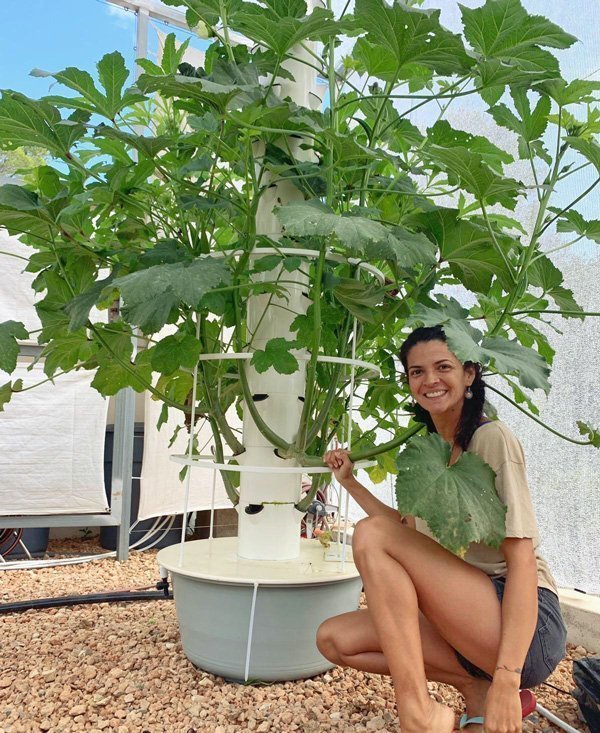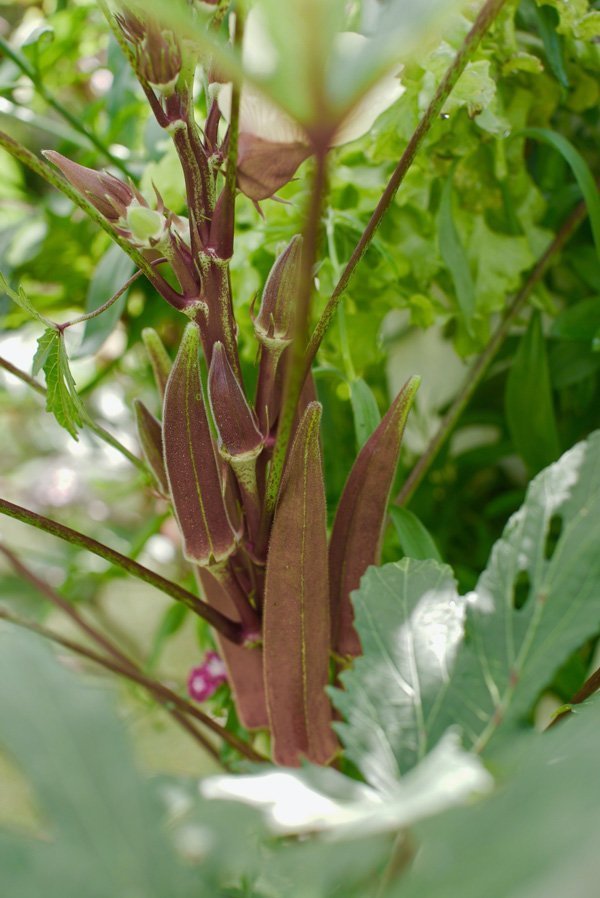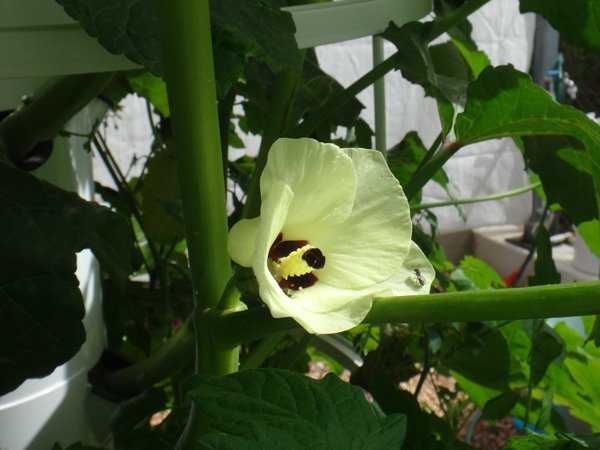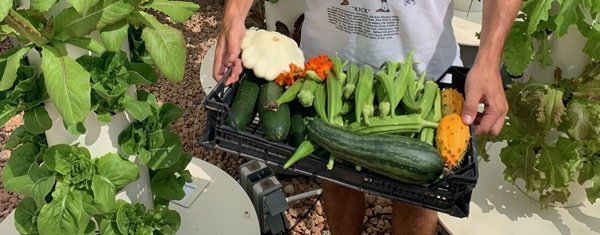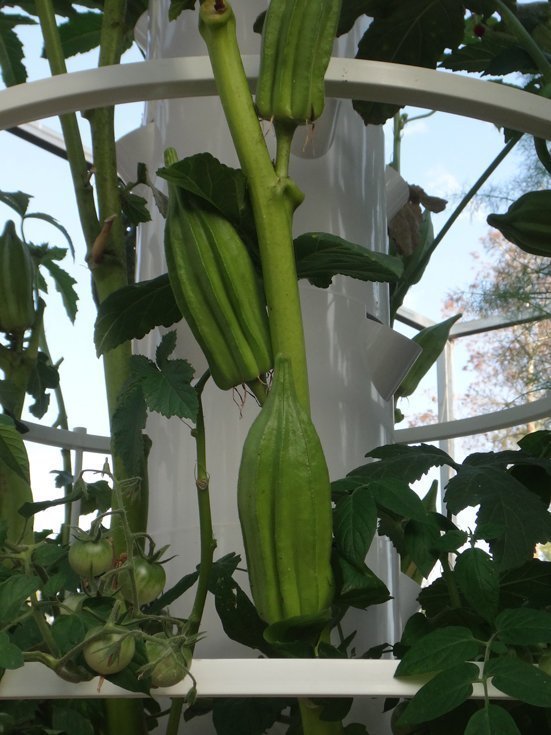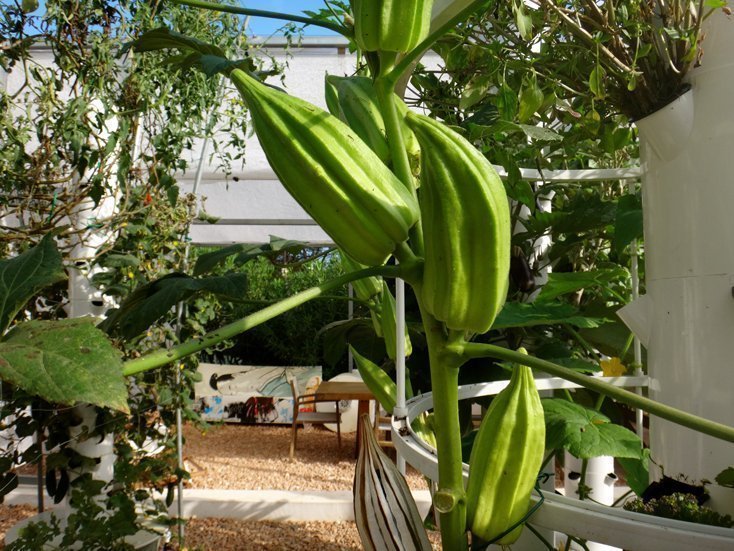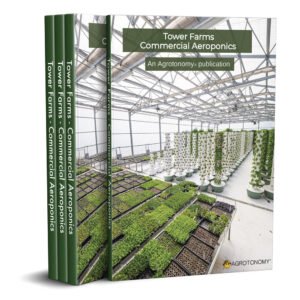Okra grows tall (up to 1.8 m/6 feet high) producing a heavy strong stem. This is why we prefer to grow okra with the support of a grow-cage. Even when planting okra in the 2 lowest sections of the tower, the plants will grow taller than the cage itself. The size of the okra plants is a serious consideration when strategizing planting other veggies in the upper sections of the tower.
Even when planting okra in the 2 lowest sections of the tower, the plants will grow taller than the cage itself. The size of the okra plants is a serious consideration when strategizing planting other veggies in the upper sections of the tower. We recommend to grow only 2 okra plants per planting section maximum, thus allowing enough unobstructed space for more crops to grow on the upper planting section.
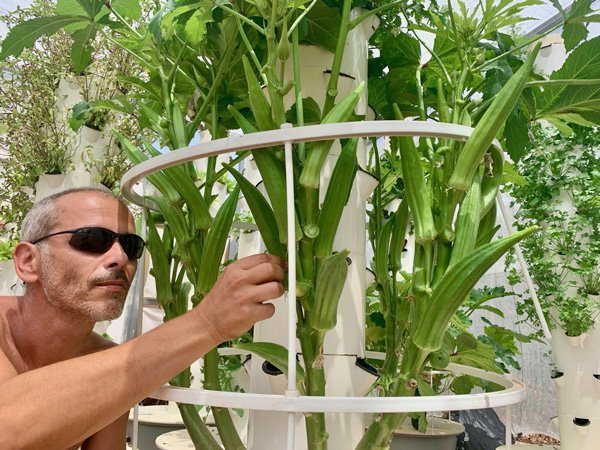
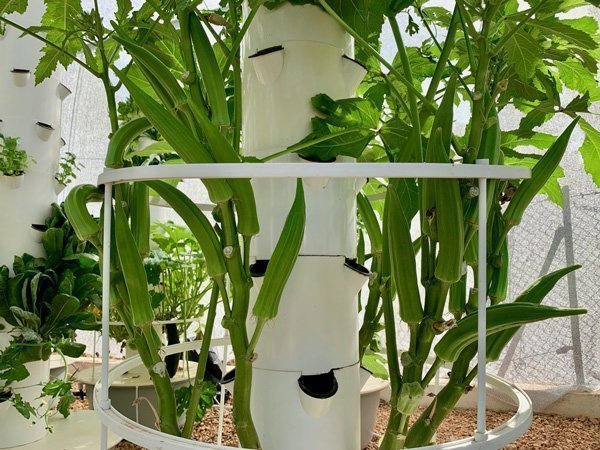
Did you know that okra, cotton, and hibiscus are botanically related and are all members of the mallow (Malvaceae) family of plants.
After the first harvest, we advise you to remove the lower leaves of the plants in an effort to speed up the production.
Okra needs to be harvested when it’s about 5 to 8 cm/ 2 to 3 inches long.
Cut the stem just above the cap with a knife; if the stem is too hard to cut, the pod is probably too old and should be tossed.
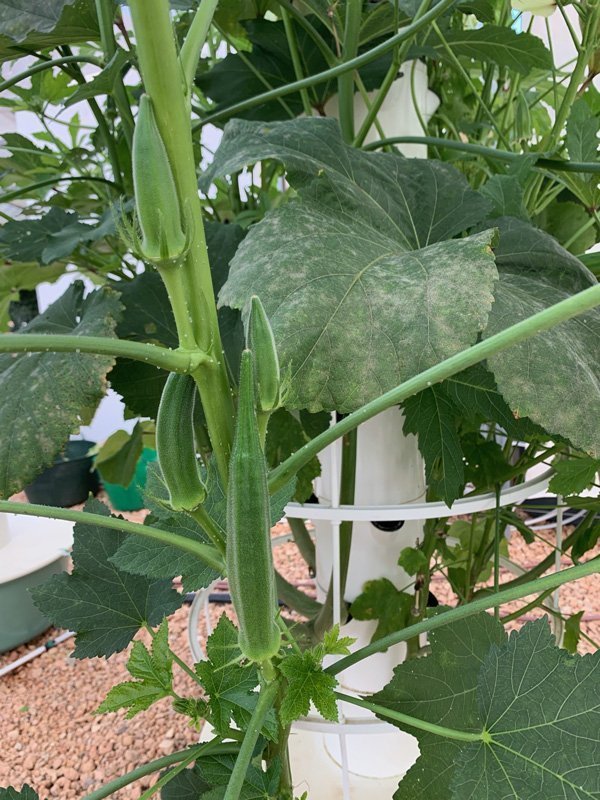

Wear gloves and long sleeves when cutting the okra because most varieties are covered with tiny spines that will irritate your skin, unless you have a spineless variety.
Do not worry: this irritation will not occur after they are cooked.
Aside from cultivating okra for our Indian cooking, we love to grow these plants because they look magnificent on the towers with their large dark green leaves and their beautiful yellow flowers.
It is truly an ornamental plant: very rewarding experience from a gardening perspective.
However, the downside is that okra plants produce large leaves and obstruct many planting ports hence reducing the plant growing potential of the tower.
The okra flower is a magnificent tropical-looking beauty!
